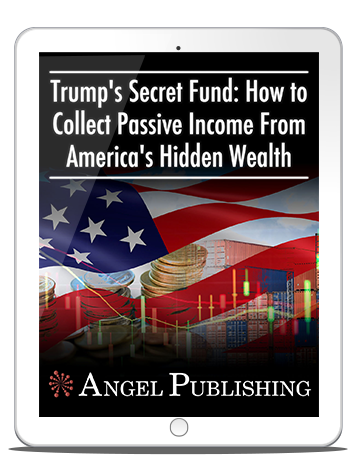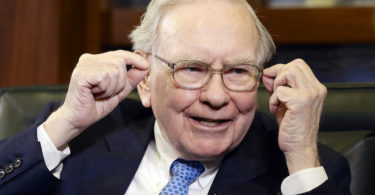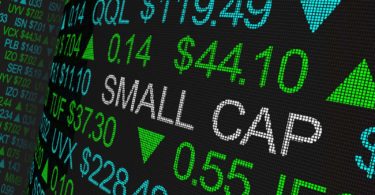Dividend Policy & Yield 📈
Charles Schwab Corporation (NYSE: SCHW) boasts a consistent dividend history, having paid 143 consecutive quarterly dividends since its first payout in 1989 ([1]). The company targets a conservative payout ratio of only 20%–30% of net income for its common stock dividend ([1]), preferring to reinvest profits and repurchase shares. This policy has translated into steady dividend growth: for example, the board approved an 8% increase (an additional $0.02) to a $0.27 quarterly dividend per share in late 2023 ([1]) (paid in 2024). Notably, Schwab has never cut its regular dividend in modern history, even during tumultuous periods, underscoring management’s commitment to returning capital.

URGENT: Get “Trump\'s Secret Fund” — Learn How to Collect Royalty Checks
Limited report reveals the #1 American oil & gas royalty play that can start paying monthly — with just $50.
Start w/ $50
Yes — Send My Report
Fast download • Instant access • Seats limited
Today Schwab’s annualized dividend stands at $1.08 per share, equating to a ~1.1% yield at current stock prices ([2]). This yield is relatively modest – below the broader financial sector average – due to the stock’s strong valuation. However, the low payout ratio means the dividend is very well-covered by earnings (roughly one-quarter to one-third of profits), providing a cushion for sustainability ([1]). In addition, Schwab supplants its dividend with aggressive buybacks: in July 2025 the board authorized a new $20 billion stock repurchase plan (replacing the prior program) ([3]). This huge buyback (over 10% of Schwab’s market cap) and the regular dividend underscore robust capital return strategies as the company generates excess capital. For income-focused investors, Schwab’s dividend offers reliability more than high yield, aligning with management’s view that a growing but restrained dividend (plus buybacks) maximizes long-term shareholder value.
Leverage, Funding & Debt Maturities ⚖️
Balance sheet leverage and funding mix have been key focal points for Schwab, especially after 2022–2023’s rapid rate hikes. As a brokerage-bank hybrid, Schwab’s asset base ballooned with tens of billions in customer cash, much of which the firm invested in low-yield bonds during the ultra-low-rate era. When the Federal Reserve began aggressively tightening, Schwab faced twin pressures: clients swept cash into higher-yield alternatives, and the market value of Schwab’s bond portfolio sank (creating large unrealized losses on hold-to-maturity securities). Consequently, deposits fell and Schwab turned to external funding. By late 2023, Schwab had borrowed heavily from the Federal Home Loan Bank (FHLB) system and issued certificates of deposit to cover outflows ([4]). Specifically, at 2024 year-end Schwab’s banking subsidiaries had $16.7 billion in FHLB secured advances (maturing by mid-2025 at ~5.1% interest) and $27.7 billion in brokered CDs coming due by late 2025 at about 4.9% cost ([1]) ([1]). These short-term borrowings bridged the liquidity need but came at a markedly higher interest expense, squeezing margins. Schwab’s Q1 2024 profit drop of 15% year-on-year was largely due to surging interest expense on deposits and borrowings (net interest revenue fell 19%) ([5]). This funding pinch was a direct effect of the Fed’s hikes, which forced Schwab to pay up for funding or risk losing clients’ cash.
The good news is Schwab entered this period with solid capital and manageable long-term debt. The firm carries about $22.3 billion in senior notes (unsecured debt) outstanding, with maturities staggered from 2025 through 2034 ([1]). The average interest cost on these notes is a relatively low ~3.7%, and they are rated in the “A” category (A2/A-/A), reflecting a strong credit profile ([1]). Near-term maturities are very manageable – for instance, 2025 senior note maturities are only a small portion of the total, so refinancing needs are limited. Schwab’s sizeable bond portfolio is held-to-maturity, meaning the company intends to hold those securities (about $146 billion as of end-2024) until they roll off ([1]). This avoids crystallizing the unrealized losses from higher rates, but it also ties up capital in low-yielding assets (the HTM portfolio yields just ~1.7% ([1])). The trade-off is that Schwab must rely on interim funding (like the FHLB loans) to meet liquidity needs instead of selling HTM assets – a strategy that works as long as market confidence holds.
Crucially, regulatory capital ratios remain above requirements, even after the 2023 stress. Schwab’s Tier 1 leverage ratio (core capital as a percent of total assets) was ~9.9% at December 2024, up from 8.5% a year prior ([1]) ([1]). This improvement partly came from shrinking the balance sheet (reducing low-margin assets) and retained earnings. Schwab’s main bank subsidiary is considered “well-capitalized” with a Tier 1 leverage of 11.6%, far above the 5% regulatory threshold ([1]) ([1]). In fact, Schwab intentionally slowed asset growth in 2023 (total assets fell ~3% in 2024) to bolster capital ratios ([1]). Bottom line: Schwab has higher leverage than pure brokers (due to its banking arm), but it is managing this prudently. The heavy use of short-term wholesale funding in 2023–2024 is a temporary pressure that should abate as interest rates stabilize. Investors should watch upcoming debt maturities and the pace at which expensive FHLB/CD funding can be paid down – a key to restoring Schwab’s net interest margin in a normalized environment.
Earnings Coverage & Cash Flow 💰
Despite recent headwinds, Schwab’s earnings comfortably cover its dividends and fixed charges. The company’s policy of keeping dividends at ~20–30% of net income means a healthy coverage ratio – for example, in 2024 Schwab generated $5.48 billion in net income available to common stockholders ([1]), while paying roughly $1.8 billion in common dividends (about 33% payout). Even during the 2023 profitability dip (net income fell to ~$4.65 billion amid margin compression ([1])), the payout ratio stayed near management’s target range. This implies that dividends are well protected by ongoing earnings, and there is ample buffer before any consideration of a cut – a reassuring fact given some peers had to trim payouts during the banking turmoil. Schwab’s interest coverage also remains solid. While interest expense climbed sharply with all the short-term borrowing, the firm’s earnings before interest and taxes still far exceed its interest obligations. Moreover, much of Schwab’s “interest expense” is actually the interest paid to clients on their cash, which is a variable cost that can flex down if rates decline. Traditional measures like EBITDA/interest are less applicable for a financial firm, but the overall picture is that Schwab generates sufficient cash flow to comfortably service debt and fund operations.
It’s also worth noting that Schwab’s cash flow generation is bolstered by non-interest income (trading revenue, fee income, etc.), which helps diversify its coverage. In the latest quarter, trading and fee revenues hit record levels (e.g. Q3 2025 trading revenue up 25% to $995 million ([6])), taking some pressure off interest income. This mix means Schwab isn’t solely dependent on spread income to cover its costs. Share buybacks, when executed, are done out of surplus capital and do not impair Schwab’s ability to meet obligations – for example, the $1.5 billion repurchase of TD Bank’s stake in early 2025 was financed from existing resources ([1]). All told, Schwab’s conservative dividend policy and diversified revenue streams ensure that coverage ratios remain healthy. The firm’s own target is to return capital to shareholders while keeping ample retained earnings to fuel growth ([1]), and so far it has struck that balance well. Investors can take comfort that current payouts are supported by underlying cash flows, even under stress scenarios.
Valuation and Comparables 📊
SCHW stock’s valuation reflects its unique positioning as a leading brokerage with bank-like features. As of late 2025, shares trade around 20–21× trailing earnings ([7]), which is a premium to traditional banks (most large banks trade in the mid-teens P/E range) but reasonable given Schwab’s robust growth in client assets. On a forward basis, Schwab’s P/E is about 17× based on consensus earnings, as the market expects earnings to rebound with improving interest margins. Price-to-book stands near 3.3×–3.5× ([8]), well above the banking industry average (typically ~1× for large banks) – however, this is skewed by Schwab’s high return on equity and asset-light fee businesses. Schwab’s return on equity historically has been strong (often in the mid-teens or higher), justifying a higher P/B multiple. For context, at the stock’s trough during the 2023 scare, SCHW briefly traded near ~2.5× book ([8]) and ~14× earnings ([7]) – a bargain valuation that quickly corrected as fears subsided. The stock has roughly doubled off its 2023 lows, moving from around $50 to the mid-$90s, which expanded the valuation metrics back toward historical norms ([7]).
When comparing to peers, Schwab sits somewhat between Wall Street banks and fintech brokers. Traditional brokers with sizable banking arms, like Morgan Stanley, trade around 15–16× earnings, while pure online brokers can have even higher multiples (Interactive Brokers, for example, has traded above 25× P/E at times). Schwab’s ~21× trailing multiple ([7]) suggests the market is pricing in renewed growth (client asset and trading growth) as well as some relief on interest costs going forward. Its valuation also prices in the stability of a massive $10 trillion asset base – Schwab is less cyclical than an investment bank and more entrenched, deserving of a franchise premium. That said, the current valuation is at the upper end of Schwab’s own 10-year range by P/E. The stock’s dividend yield of ~1.1% ([2]) is on the low side, indicating investors are paying up for future growth and not primarily buying Schwab for income. In summary, SCHW looks neither cheap nor egregiously expensive given its quality – investors are valuing its dominant retail brokerage franchise and expecting that the recent earnings headwinds will turn into tailwinds. Any significant “market shift ahead” (such as a change in interest rate trajectory or investor activity) will be crucial in determining if this valuation is justified by accelerating earnings or if multiples will need to recalibrate.
Risks, Red Flags, and Open Questions ⚠️
Despite Schwab’s strengths, there are notable risks and red flags that warrant investor attention:
– Interest Rate Sensitivity: Schwab remains highly sensitive to interest rate movements. The rapid rate hikes of 2022–2023 revealed an Achilles’ heel: heavy exposure to low-yield bonds funded by fickle deposits. If rates stay higher for longer, Schwab’s net interest margin could remain under pressure as it must continue offering attractive yields to prevent further cash outflows. Conversely, if rates plunge in a recession, Schwab’s interest income on its large fixed-rate HTM portfolio would lag, though funding costs would also fall. The timing and pace of Fed rate changes represent a key uncertainty – will Schwab’s earnings normalize smoothly or face another jolt? Recent results give some optimism: by Q3 2025, as interest rates leveled off, Schwab’s profit soared 67% to a record $2.36 billion ([6]). This suggests earnings rebound strongly once the funding squeeze eases. However, it also raises a question: is Q3’s performance sustainable or partly a one-time surge from favorable market conditions?
– Client Cash Sorting & Deposit Flows: A major ongoing risk is client behavior in where they park cash. The industry term “cash sorting” describes customers moving idle cash to higher-yield options. Schwab saw significant declines in bank deposits through 2023 ([4]) as clients swept money into money market funds and Treasuries. In Q4 2023, Schwab’s bank deposits dropped and net new asset flows slowed by ~48% ([4]), contributing to an almost 50% YoY drop in quarterly profit ([4]). Although those trends stabilized in 2024, any renewed flight of deposits (for example, if competitors offer meaningfully better rates or if another bout of market fear occurs) could force Schwab to rely again on high-cost borrowings. How well Schwab can retain client cash or migrate clients to on-balance-sheet products without hurting margins is an open question. Management has been raising yields on sweep accounts and touting the convenience of keeping cash at Schwab, but savvy clients will chase returns, especially corporate or RIA clients managing large cash balances.
– Market Volatility & Trading Activity: Schwab’s business also benefits from healthy investor activity. Market shifts can cut both ways here. A sustained bull market tends to lift Schwab’s asset-based fees and encourage trading (as seen in 2025, with record client assets of $11.6 trillion and a 25% jump in trading revenue amid rising markets ([6])). Conversely, a major bear market or downturn could reduce client asset values (hurting fee income), dampen trading volumes, and slow new account growth. While Schwab’s diverse revenue (net interest, trading, advisory fees) gives some resilience, an equity bear market coupled with narrowing interest spreads would be a tough combo. Investors should monitor macro indicators: is a recession on the horizon in 2026? If so, Schwab might face a very different environment than the buoyant conditions that propelled its recent record profit.
– Regulatory and Capital Requirements: Regulatory changes loom large. Schwab, though not a traditional “systemically important bank,” is one of the largest U.S. financial institutions by assets. Regulators have proposed raising capital requirements (the Basel III “endgame” rules) for banks of Schwab’s size, which could significantly increase the capital Schwab must hold ([1]). New rules taking effect from 2025–2028 may force higher common equity levels or restrict balance sheet growth. Schwab has already begun adjusting its capital planning in anticipation ([1]). There’s a risk that stricter capital rules could constrain share buybacks or dividend growth in coming years if regulators demand a bigger safety buffer. Additionally, any missteps in risk management (e.g. duration risk in the bond portfolio) could invite regulatory scrutiny. Schwab’s banking arm must continue to pass annual stress tests and maintain “well-capitalized” status – a failure to do so would be a serious red flag, though there’s no indication of that currently.
– Insider Moves & Leadership Changes: The very catalyst for this report – insider transactions – is itself a noteworthy signal. In 2025, Schwab insiders (including Founder and Co-Chairman Charles R. “Chuck” Schwab) have been net sellers of the stock during its rally. For instance, Mr. Schwab sold hundreds of thousands of shares in multiple Form 4 transactions around mid-2025 at prices in the mid-$80s to mid-$90s ([9]) ([9]). The Chief Risk Officer also exercised options and sold stock after a 100%+ gain from the lows ([10]). While insiders may sell for many reasons (diversification, estate planning), the cluster of sizable sales near all-time highs raises a yellow flag. It at least suggests that those closest to the business consider the current valuation a fair point to take some money off the table. By contrast, one might note there was insider buying during the March 2023 scare – insiders showed confidence then by holding or adding when the stock plunged (there were no panicked insider dumps during the crisis). The recent sales don’t necessarily foretell doom, but investors should ask: why are top executives trimming exposure now? Could it hint at internal expectations of a tougher road ahead (perhaps slower growth or margin limits), or is it just personal financial management? This remains an open question and merits watching upcoming insider filings.
– Leadership Transitions: In parallel, Schwab is undergoing leadership change. Long-time CEO Walt Bettinger is retiring at end-2024, with President Rick Wurster taking the helm ([11]). Such transitions can be delicate – Bettinger steered Schwab through the zero-commission pivot and the TD Ameritrade integration; Wurster will face the task of navigating the next phase. Additionally, Schwab appointed a new CFO in late 2024 (replacing a 20-year veteran) ([12]). New leadership may bring fresh strategy, but also uncertainty. Will the new CEO maintain the same risk posture and client-focus culture? Any strategic shifts (e.g. more aggressive growth vs. emphasis on margin) under new management could impact the stock. So far, the transition appears orderly, but execution risk is something to keep in mind as insider moves occur amidst C-suite changes.
– Other risks: Schwab faces competitive pressure from fintech and big banks alike. Its scale is a huge advantage, but also competitors are vying for young investors (Robinhood, etc.) and high-net-worth clients (wirehouses, fintech robo-advisors). Maintaining technology leadership and customer satisfaction is critical – any tech mishaps or service issues could drive clients elsewhere in today’s fluid market. Lastly, macroeconomic wildcards (inflation, geopolitical events) could indirectly hit Schwab’s business through their impact on investor confidence and interest rates.
Red flags to monitor going forward include any unusual uptick in client attrition, further insider selling patterns, or signs that funding costs are not coming down despite Fed policy changes. Schwab’s announcement in late 2023 of a 5%–6% workforce layoff (about 2,000 jobs) to cut costs ([13]) is a reminder that the firm had to react to margin pressures – one wants to see that those cuts, combined with revenue recovery, indeed improve operating leverage in 2024–2025. If expenses creep back up or revenue softens, that could be problematic.
Conclusion & Outlook 🔍
The recent insider moves at Schwab – notably high-level stock sales – have raised the specter of a “major market shift ahead.” In many ways, Schwab sits at the crossroads of key market forces: interest rates, investor behavior, and regulatory change. The bull case is that the worst of the interest rate storm has passed; Schwab’s earnings are already rebounding strongly as funding pressures ease and client engagement stays high. In this optimistic scenario, insiders selling could simply mean they think the market has appropriately valued the recovery. Furthermore, with a massive client asset base and proven resilience, Schwab is poised to capitalize if a falling-rate environment emerges – lower funding costs could unlock significant earnings upside (all those low-yield bonds will eventually mature and can be reinvested at higher yields, and unrealized losses would shrink). Additionally, the integration of TD Ameritrade is complete, and Schwab continues to gather new assets (over $100 billion in net new assets in recent quarters ([6])), reinforcing its franchise.
The bear case is that insiders are indeed signaling caution: perhaps the easy gains from rising markets and rate stabilization are behind us, and tougher competition or regulation could cap future returns. If the “major market shift” refers to a turn in the economic cycle (say, a recession or bear market), Schwab could face a dual hit of lower asset-based fees and only modest relief on deposit costs (especially if the Fed cuts rates due to economic weakness, not strength). Moreover, upcoming capital rules might require Schwab to retain more earnings, slowing buybacks or dividend hikes – potentially a headwind for the stock’s appeal.
Key open questions remain. Will Schwab’s clients continue to optimize their cash in a way that forces Schwab to fundamentally adjust its balance sheet strategy? Can the company maintain its industry-leading profit margins as it competes on yield and service? How will new CEO Rick Wurster steer the ship – doubling down on growth or prioritizing stability? And importantly, how will Schwab deploy its war chest (the newly authorized $20 billion buyback) – gradually, to support the stock, or opportunistically on dips? The resolution of these questions will determine if Schwab’s current valuation is a floor or a ceiling.
In summary, Schwab is financially strong but not without challenges. Dividend investors can take solace in a safe (if small) payout, and the company’s prudent capital management is a plus. However, the signals from insiders and the broader context imply that investors should stay vigilant. A “major market shift” – whether it’s interest rates inflecting, a change in investor sentiment, or regulatory regime change – will test Schwab’s adaptability once again. Thus far, the company’s track record suggests it can navigate the currents. But with the stock near highs and insider confidence seemingly mixed, it’s wise to monitor those tea leaves closely. Schwab’s next chapter will likely be defined by how well it balances growth, risk, and shareholder returns amid whatever market shift lies ahead.
Sources
- https://sec.gov/Archives/edgar/data/316709/000031670925000010/schw-20241231.htm
- https://macrotrends.net/stocks/charts/SCHW/charles-schwab/dividend-yield-history
- https://reuters.com/business/finance/charles-schwab-authorizes-20-billion-stock-buyback-declares-dividends-2025-07-24/
- https://investing.com/news/stock-market-news/charles-schwab-corp-faces-turbulent-year-amid-interest-rate-hikes-3276628
- https://reuters.com/business/finance/charles-schwabs-profit-drops-higher-interest-payouts-2024-04-15/
- https://reuters.com/business/finance/us-broker-schwab-clinches-record-profit-client-assets-trading-strength-2025-10-16/
- https://macrotrends.net/stocks/charts/SCHW/charles-schwab/pe-ratio
- https://macrotrends.net/stocks/charts/SCHW/charles-schwab/price-book
- https://secform4.com/insider-trading/923738.htm
- https://stocktitan.net/sec-filings/SCHW/form-4-the-charles-schwab-corporation-insider-trading-activity-d8e22e6824da.html
- https://reuters.com/business/finance/charles-schwab-ceo-walt-bettinger-retire-2024-10-01/
- https://reuters.com/business/finance/charles-schwab-names-michael-verdeschi-cfo-2024-07-25/
- https://apnews.com/article/e2e72233a05ea87e816a08bc2c7467c0
For informational purposes only; not investment advice.





